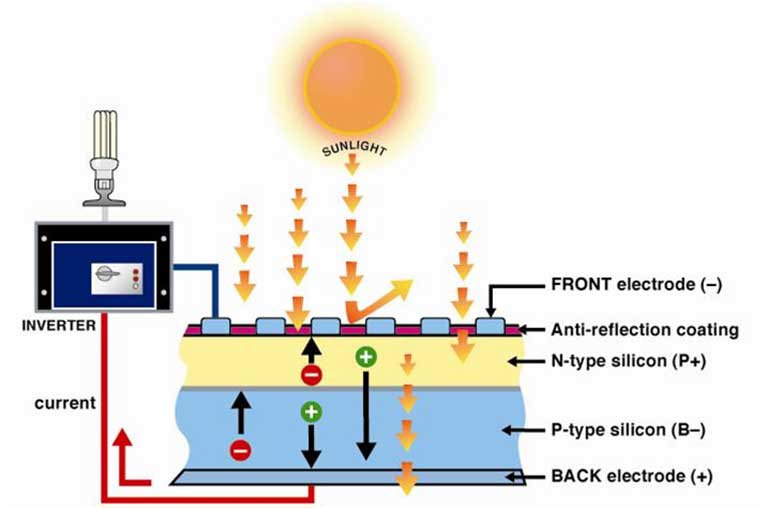


Solar system consists Photovoltaic Modules which converts solar energy (Sun light) in to Electrical energy. A photovoltaic cell is made of two thin slices of silicon sandwiched together and attached to metal wires. The top slice of silicon, called the N-layer, is very thin and has a chemical added to it that provides the layer with an excess of free electrons. The bottom slice, or P-layer, is much thicker and has a chemical added to it so that it has very few free electrons.
When the two layers are placed together, an interesting thing happens-an electric field is produced that prevents the electrons from traveling from the top layer to the bottom layer. This one-way junction with its electric field becomes the central part of the PV cell.
When the PV cell is exposed to sunlight, bundles of light energy known as photons can knock some of the electrons from the bottom P-layer out of their orbits through the electric field set up at the P-N junction and into the N-layer.
The N-layer, with its abundance of electrons, develops an excess of negatively charged electrons. This excess of electrons produces an electric force to push the additional electrons away. These excess electrons are pushed into the metal wire back to the bottom P-layer, which has lost some of its electrons.
This electrical current will continue flowing as long as radiant energy in the form of light strikes the cell and the pathway, or circuit, remains closed.
This Electrical energy generated by PV Module is in form of DC (Direct Current) Power. But, we require electricity at our home in form of AC (Alternative Current) Power. For this Electronics Converter (Inverter) use for convert DC Power in to AC Power and it can be flow directly to the loads.


Solar Energy has great future but susceptible to fail if operation and maintenance is overlooked.